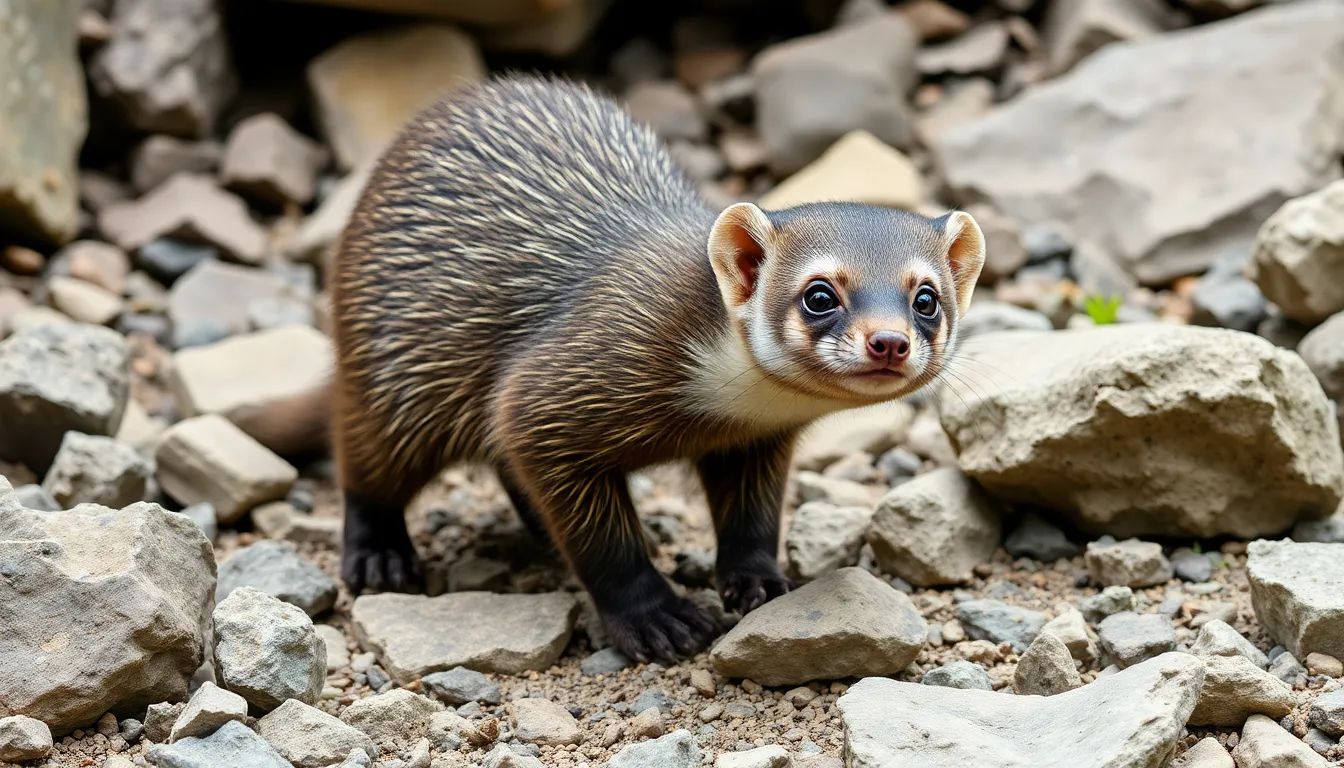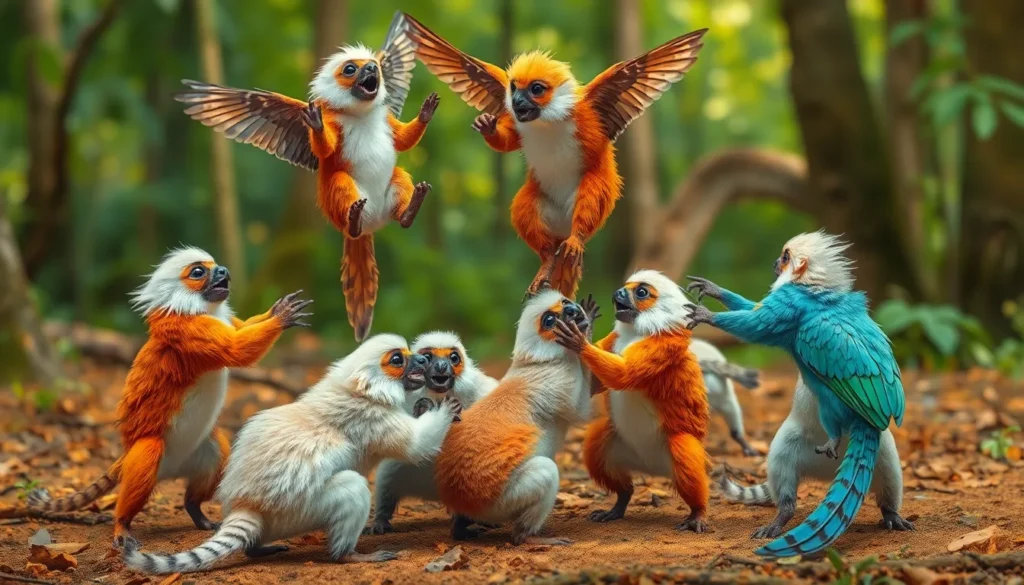Tseacoets might sound like a character from a quirky cartoon, but they’re actually the unsung heroes of the animal kingdom. These little creatures pack a punch with their unique adaptations and playful antics that can brighten anyone’s day. Imagine a blend of charm and mischief, and you’ve got the perfect recipe for discovering the fascinating world of tseacoets.
Whether they’re stealing snacks or performing acrobatics that would make a circus proud, tseacoets know how to keep things entertaining. But there’s more to these critters than just their comedic flair. Dive into their captivating behaviors and quirky traits, and you’ll find that they’re not just fun to watch—they’re essential to their ecosystems. Get ready to explore the delightful and sometimes downright hilarious life of tseacoets.
Tseacoets
Tseacoets are captivating creatures known for their playful antics and unique adaptations. These small mammals thrive in various ecosystems, showcasing versatility in habitats ranging from forests to urban areas. Their mischievous nature includes stealing foods and performing acrobatic stunts, which adds a layer of entertainment to observing them in the wild.
Importance extends beyond their amusing traits. Tseacoets contribute significantly to their ecosystems by dispersing seeds and pollinating plants. Such activities promote biodiversity and enhance plant regeneration, making them essential players in maintaining ecological balance.
Physical characteristics exhibit remarkable diversity. Tseacoets typically possess agile bodies, allowing them to navigate complex environments with ease. Fur coloration varies, blending into their surroundings and providing camouflage against predators. Their keen sense of sight and hearing aids in avoiding danger while foraging and playing.
Behaviors reveal intriguing social dynamics. Tseacoets often form small groups, fostering cooperation in search for food. Vocalizations range from chirps to whistles, serving as communication methods within these social structures. Additionally, playful interactions among individuals help strengthen social bonds.
Adaptations to various environments highlight their resilience. Water conservation traits suit them for dry habitats, while climbing abilities facilitate access to elevated food sources. These adaptations underscore their survival skills, allowing tseacoets to thrive amid changing conditions.
Overall, tseacoets embody a blend of charm and ecological significance, captivating those who encounter them. Their fascinating behaviors and adaptations warrant further exploration into their roles and contributions within ecosystems.
Features of Tseacoets

Tseacoets possess distinctive features that enhance their charm and functionality in diverse environments. These characteristics become apparent in their design, build quality, and performance metrics.
Design and Build Quality
Tseacoets display a sleek and agile physique. Their compact form allows for quick movements and adaptability to varying terrains. Fur coloration varies, helping them blend into different habitats. Rounded ears and large eyes give tseacoets excellent hearing and vision, aiding in predator surveillance. Enhanced gripping pads on their paws facilitate climbing and foraging in elevated areas. Overall, this unique design supports their lifestyle as playful yet cautious creatures.
Performance Metrics
Tseacoets exhibit impressive agility, capable of jumping distances up to three feet. Their speed can reach 15 miles per hour over short bursts during evasive maneuvers. Efficient foragers, they often locate food sources within a radius of 100 meters in under 30 minutes. During social interactions, communication occurs through over 20 distinct vocalizations, enhancing their community dynamics. These performance metrics underscore their adaptability and versatility in various ecosystems.
Comparison with Other Similar Products
Tseacoets exhibit unique traits compared to other small mammals, such as squirrels and ferrets. Their agility sets them apart; tseacoets can jump distances up to three feet, while squirrels typically reach only two feet. Speed also distinguishes them; tseacoets can reach speeds of 15 miles per hour, whereas ferrets generally max out at 10 miles per hour.
Social behaviors highlight further differences. Tseacoets form small groups that actively cooperate, unlike ferrets, which often display solitary tendencies. Communication skills mark another distinction; tseacoets utilize over 20 distinct vocalizations, facilitating complex social interaction. In contrast, squirrels primarily communicate through a limited range of sounds.
Additionally, adaptations enhance tseacoets’ survival strategies within diverse habitats. Water conservation traits enable tseacoets to thrive in arid regions, while many other small mammals lack similar capabilities. Climbing abilities rank as another notable feature. Tseacoets easily access elevated food sources, a skill that sets them apart from species such as moles, which are not adapted for climbing.
Performance metrics emphasize tseacoets’ efficiency in locating food. Capable of finding sources within a 100-meter radius in under 30 minutes, tseacoets outpace many competitors. Mice, for example, generally take longer to identify food sources, indicating tseacoets’ superior foraging skills.
Tseacoets combine agility, social dynamics, communication, and unique adaptations, distinguishing them from other similar small mammals. Their ecological roles and playful behaviors underscore their significance and charm, further warranting interest in their study.
User Experience and Feedback
Observing tseacoets in their natural environment evokes curiosity and admiration. Their playful antics along with charming behaviors greatly enhance the user experience for wildlife enthusiasts and researchers alike.
Pros of Tseacoets
Tseacoets offer numerous advantages in their ecosystems. Their friendly demeanor encourages visitors to appreciate local wildlife. Social interactions among tseacoets create engaging viewing opportunities. These creatures contribute positively to biodiversity by dispersing seeds. Keen foraging skills, demonstrated by locating food quickly, impress observers. Their agility captivates audiences as they leap and climb with ease. Communication through distinct vocalizations also intrigues those studying animal behavior.
Cons of Tseacoets
Despite their charm, tseacoets present some challenges. Their mischievous tendencies can lead to pilfering food from unsuspecting humans. As they thrive in urban settings, local communities may experience property damage. Their presence can disrupt gardens and agricultural areas. Conservation efforts may require monitoring their populations to ensure balance. Human-wildlife interactions pose risks, potentially resulting in conflicts. Awareness of these concerns is vital for coexistence with tseacoets.
Conclusion
Tseacoets are more than just playful creatures; they play a crucial role in maintaining ecological balance. Their agility and social behaviors not only entertain but also contribute to biodiversity through seed dispersal and pollination. Observing these charming mammals in their natural habitats offers a glimpse into their fascinating lives and the intricate ecosystems they inhabit.
As their populations face challenges in urban environments, understanding their behaviors and needs becomes essential. By fostering coexistence and promoting conservation efforts, society can ensure that tseacoets continue to thrive and enchant future generations. Their unique adaptations and lively antics remind us of the beauty and complexity of nature.



